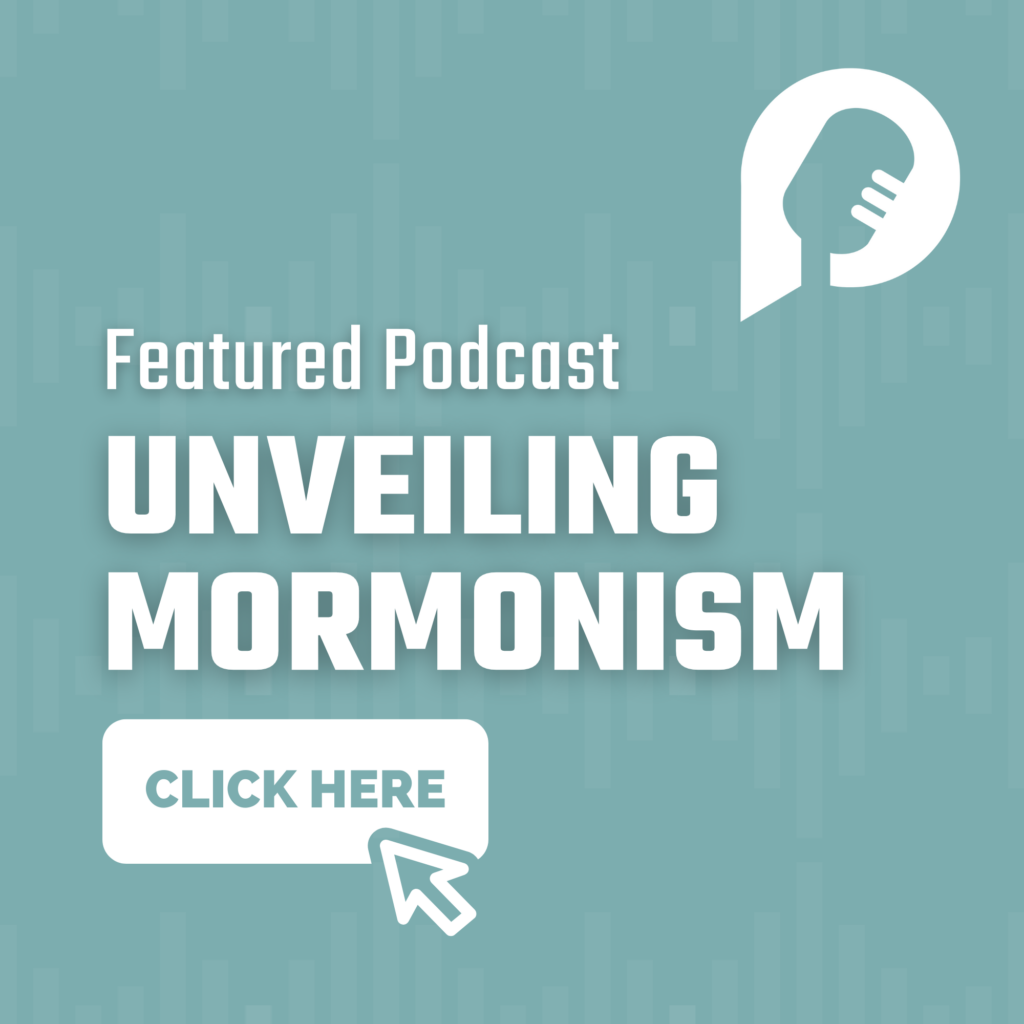Mormons Are a Lot Like Samaritans
Jesus was Jewish, while the Samaritans were members of a rival faith. They had their own rival priesthood and temple, and their own version of the scriptures. There was also a history of antagonism with the Jews. So Mormons relate to Christians much like Samaritans did to Jews. As we look at how Jesus interacted with a Samaritan woman in John 4, we learn how he might relate to Mormons.
Jesus Would Rebuke Anti-Mormons
First, notice another encounter Jesus had with Samaritans.
Luke 9:52-55 Jesus sent messengers ahead to a Samaritan village to prepare for his arrival. But the people of the village did not welcome Jesus because he was on his way to Jerusalem. When James and John saw this, they said to Jesus, “Lord, should we call down fire from heaven to burn them up?” But Jesus turned and rebuked them.
Jesus’s followers were upset with the response of the Samaritans and wanted to go on the attack. Many Christians in Utah feel the same way about Mormons. We get frustrated with LDS culture and want to lash out, but Jesus rebuked that attitude.
Jesus Would Build Bridges
John 4:6-9 Jesus, tired from the long walk, sat wearily beside the well about noontime. Soon a Samaritan woman came to draw water, and Jesus said to her, “Please give me a drink.”…The woman was surprised, for Jews refuse to have anything to do with Samaritans. She said to Jesus, “You are a Jew, and I am a Samaritan woman. Why are you asking me for a drink?”
Jesus connected with this woman in spite of the animosity between their peoples. Based on his example, we learn that we build bridges one person and one conversation at a time. Second, we build bridges by taking risks and crossing cultural barriers. Jesus risked defilement by associating with a foreigner. Third, we build bridges by authenticity. Jesus was open about his own need – his thirst. Finally, we build bridges by going where people hang out, places like the town well.
Jesus Would Bring Good News, Not Bad
John 4:10 Jesus replied, “If you only knew the gift God has for you and who you are speaking to, you would ask me, and I would give you living water.”
Jesus’s message was positive. It was an offer of a refreshing, life-giving gift. (See “Communicating Good News to Mormons“.)
Jesus Would Identify the Real Issues
John 4:19-24 “Sir,” the woman said, “you must be a prophet. So tell me, why is it that you Jews insist that Jerusalem is the only place of worship, while we Samaritans claim it is here at Mount Gerizim, where our ancestors worshiped?” Jesus replied, “….You Samaritans know very little about the one you worship, while we Jews know all about him, for salvation comes through the Jews. But the time is coming—indeed it’s here now—when true worshipers will worship the Father in spirit and in truth. The Father is looking for those who will worship him that way. For God is Spirit, so those who worship him must worship in spirit and in truth.”
The woman raised a question that divided Samaritans and Jews: where to worship. But she was asking the wrong question. Jesus answered, but also redirected her to the right questions: “Where does a person find salvation?” and “Who is God?” These are also the core issues between Mormonism and historic Christianity, but they are not usually the issues Mormons prefer to discuss.
Jesus Would Make Himself Known
John 4:25-26 The woman said, “I know the Messiah is coming—the one who is called Christ. When he comes, he will explain everything to us.” Then Jesus told her, “I am the Messiah!”
Jesus didn’t just teach this woman some abstract truth. He pointed her toward himself. We do well not just to have the right answers about the right issues; we need to always point Latter-day Saints to the person of Jesus.
There Is a Spiritual Harvest in Utah
John 4:31-35 The disciples were urging Jesus, “Rabbi, eat something.” But Jesus replied, “I have a kind of food you know nothing about…. My nourishment comes from doing the will of God, who sent me, and from finishing his work. You know the saying, ‘Four months between planting and harvest.’ But I say, wake up and look around. The fields are already ripe for harvest.”
Jesus wanted his followers to understand that God was at work even in Samaria. Likewise, Jesus might say to us, “Wake up and look around.” God is working through his people in Utah. The harvest of people here prepared to trust Jesus for salvation is riper than at any time since the Mormons arrived. So there is reason to hope that we can not only survive here but thrive here.
Finally, let’s consider some practical tips about how to make an impact for Jesus in Utah.
How to Thrive
Stay connected to other believers. Get involved in your church. Become part of a small group where you can grow and get support.
Be gracious toward your neighbors. Be friendly and patient. Don’t adopt a suspicious or insular attitude yourself.
Don’t obsess about Mormonism. It’s great to have a working knowledge, but keep your main focus on your own pursuit of God.
How to Make a Difference
Embrace your role as a missionary. As a Christ-follower, you are a missionary wherever you go – including Utah.
Care about people in practical ways. When you see a need, help out.
Don’t talk about what you are against, but who you are for.
Don’t argue. Mormons believe that “contention” comes from the devil.
Invite people into your life. Be hospitable. Have people over. Go out together.
Invite people to church. Church is still a “normal” activity for most Utahns. Many Utah churches have strategically defined their ministries with local culture in mind.
- What is your initial reaction to this topic? What jumped out at you?
- What do you like most about living in Utah, and why?
- What is the most helpful thing you have learned in this series?
- How have you seen Christians express antagonism toward Mormons? Have you felt that yourself? What triggered it?
- How did Jesus build bridges toward the Samaritan woman? What can we learn from that example?
- Do you agree or disagree that we should keep our message to Mormons positive? Explain your answer.
- Why is involvement in a healthy church so important in Utah? How can we make sure our church involvement doesn’t keep us from connecting with neighbors?
- On a scale of 1 to 10, how “ripe for harvest” do you think Utah is, and why? How has your perspective changed?
- How has your attitude about living in Utah changed since starting this series?
- Write a personal action step based on this conversation.
This is part of the Living in Utah series.






